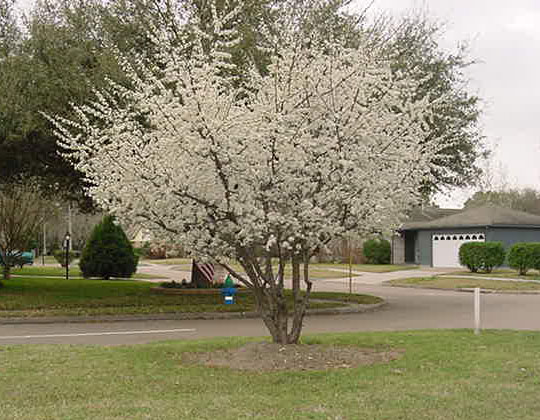Use Small Trees to Balance the Landscape

2025 Spring Antiques Show | March 20 – April 6
2025 Fall Antiques Show | October 4 – 18
When designing your landscape, it’s important to balance large elements, such as shade trees and lawns, with small trees, shrubs and perennials. In addition to enhancing the aesthetics of scale and proportion, the smaller elements allow you to increase color in the landscape and provide habitat for wildlife, birds and butterflies.
There are a number of small trees to consider.
Crape myrtles are favorite small trees for many people because they offer long periods of summer bloom and you can pick the size of crape myrtle that fits exactly into the space in your landscape. They come in lavender, pink, red and white.
Pruning has been de-emphasized. Research indicates bloom performance is just as good without heavy pruning each year.
Grow crape myrtles as specimen plants or in rows or groupings in full sun.
Visit plantanswers.com to see the size and color options that exist. The lists also provide information on disease and insect resistance, bark characteristics and fall leaf color.

Vitex is also called Texas lilac or chaste tree. The deciduous tree will grow to about 25 feet in full sun. Attractive lavender blooms are produced on stalks that emerge all over the sprawling crown of this drought-tolerant tree.
Butterflies and hummingbirds use vitex as a nectar source. Deer do not eat vitex.
Some gardeners avoid using vitex because in some habitats it has been identified as invasive. On the other hand, the Texas A&M AgriLife Extension Service has designated vitex as a Texas Superstar because of its attractive bloom, drought tolerance and pest-free growth.
Loquat (Japanese plum) is an evergreen tree that grows to 25 feet tall in sun or shade. Because of its shade tolerance, it can be used on the edge of the landscape under the crowns of large shade trees. The well-shaped tree with large leaves also makes a distinctive specimen plant and works well in rows.
Loquat bloom occurs in early winter and is not very showy, but if the winter is mild, the fruit can make quite an impact. Eat it fresh or in preserves. Loquat fruit is also a favorite food for birds. Production can be high, so avoid planting loquat on the edge of a driveway where extra fruit will fall on a car.

Mexican plum is similar to loquat. It produces fruit and is shade tolerant, but it only grows to about 15 feet tall. The bloom in February is short-lived but showy. The fruit is a favorite of birds, but the quantity is not overwhelming, and it ripens in late spring.
Mexican plum forms a very compact crown that is attractive as a specimen tree and is also attractive to nesting birds such as cardinals and mockingbirds. Mexican plum is very effective when planted in groups to form a thicket that becomes a center of bird activity. Deer do not seem to browse on Mexican plum.
Texas persimmon is harder to find than Mexican plum, crape myrtles and loquat, which are available at every nursery. You may have to visit a nursery that specializes in native plants or watch for native plant sales.
Texas persimmon is a deciduous native tree that grows to about 15 feet tall on most sites. The species resembles Mexican plum, but the crown is not as compact, and the foliage is more gray-green.
Use Texas persimmon as an understory wildlife tree. The sexes are on separate trees, so if you have a male, there is no fruit. When the female is loaded with fruit it often appears to be in motion because of the birds. It is especially attractive to golden-fronted woodpeckers.
Anaqua may eventually grow to 35 feet tall, but it is not a fast-growing tree. Some gardeners know anaqua as sandpaper tree because of the texture of its leaves. It’s evergreen and grows a very dense crown.
Anaqua blooms in early summer and produces a sticky yellow fruit in August that birds like, but homeowners who are trying to keep the patio clean don’t. Deer don’t seem to eat anaqua, and it’s relatively easy to find at area nurseries. Grow it in full sun.
Mexican olive isn’t related to the olives that produce olive oil and fruit for the table. It’s called an olive because it produces a small, round fruit every summer that doesn’t rate very high in visibility or value as a wildlife food. The Mexican olive’s most noticeable characteristic is the three-inch white blooms that cover the tree for most of the growing season.
Grow Mexican olive in full sun where it may reach 25 feet tall and nearly the same diameter. Of all the small trees described, it is the most cold-sensitive. In winters where temperatures reach 24° F, the top may die, but existing trees grow back quickly from the roots.
For more information on small trees, visit www.plantanswers.com.
Back Forty-Gardening
by Calvin R. Finch, Ph.D
Horticulturist
2025 Spring Antiques Show | March 20 – April 6
2025 Fall Antiques Show | October 4 – 18